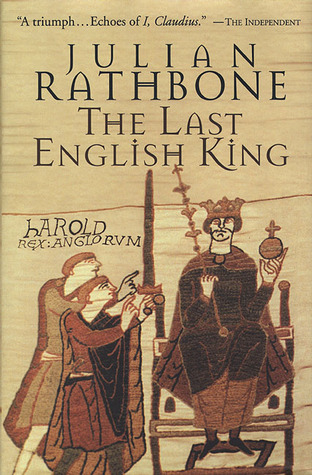Early Years
Harald was born in 1015, and the time of the Vikings was already passing. Worshipers of the old gods were dwindling in number, with fewer men taking to the long ships to raid, preferring instead to settle, farm and trade. Moreover, a century and a half of Viking raids had brought wealth to the northern lands. This wealth became increasingly consolidated into fewer and fewer hands. These Scandinavian rulers like Harold Bluetooth extended their authority across vast areas, and promoted centralization of power through the monotheistic and hierarchical religion of Christianity.
Harald's half brother of Olaf II (St. Olaf) of Norway was another such centralizer. He was ousted from rule by Cnut, who was constructing a northern empire from Denmark to England. Olaf's return to rule was contested by nobles not anxious to see the return of the heavy handed Christian. He died in the Battle of Stiklestad in 1030. The young Harald, all of 15, survived and left Norway to seek his fortune in the east.
For a while he lived among the Rus but the road to glory and fortune led to Constantinople and the famed Varangian Guard. Harald's tenure in the Empire's service as entered the realm of quasi-myth. He fought in Sicily and Syria and broke open an Arab castle by unleashing upon it a flock of flaming birds. He also gained entry into another enemy fortress through a variation on the old Trojan horse trick. While these stories are mostly fanciful, they do tell us that Harald was more than just a strong man with an axe. Where possible, he used trickery and his wiles to win battles and preserve his men's lives.
After running foul of the jealousy of the man-hungry Empress Zoe (another tall tale no doubt), he returned to Norway around 1045. The kingdom was ruled by his nephew Magnus, illegitimate son of Olaf. His demand to share power as co-ruler was granted but Magnus conveniently took ill and passed away a short while later leaving Harald the sole ruler. As king, his main policy seemed to be to conquer other kingdoms, and pay for it with high taxes on his own people.
Six Feet of English Earth
When Northumbria revolted in 1065, Harold Godwinson of Wessex appeased the rebels and removed his brother Tostig as earl. Tostig sought allies in Flanders among his wife's people, but he eventually ended up in an alliance with King Harald. After Edward's death, King Harald saw England as a prize ripe to be picked. His preparations were extensive; he landed in England with well over 200 longships.
Harald and Tostig met the earls Morcar of Northumbria and Edwin of Mercia at Fulford, routed their forces and occupied the town of York. Harold quickly mobilized and met Harald and Tostig with their warriors surprised and unprepared. In a most likely invented story of the pre-battle exchange, Harold offers to restore Tostig's lands if he abandons the invasion. When asked what he will give Harald, Harold says "Six feet of English earth, maybe more since he is bigger than the average man."
Which is exactly what Harald got that day, 25 September 1066. After many hours of melee, he fell in battle, along with most of his Norsemen. A fleet of about 20 ships was sufficient to carry the survivors back to Norway. Harold's victory was significant, with his superior tactics defeating the fury of the Vikings. However, a quicker and more decisive victory by Harold would have left him with more men
Modelling Harald
Two excellent miniatures are marketed for Harald, both depicting him at different points in his life. Crusader Miniatures produces a command pack for Varangians in their Byzantine line, with the leader easily able to represent Harald on the table.
For the older King Harald, Gripping Beast's Harald is visually impressive but almost a scale breaker. While the Norse were taller than the average, and Harald was taller than the average Norseman, this mini stands 36 mm from foot to top of his head.
I decided to accent his height even more by placing him on a built up 40mm base. Here's a shot of him with some 28mm mixed Vikings:
Historical Fiction & other media
As the last Viking invader, there's no shortage of historical fiction about Harald or in which he appears. I have not read any of the half dozen or so books I have identified that center on Harald. Here are two recommendations for books in which Harald is a suporting character.
Harald is a significant part of the the last book of Tim Severin's Viking trilogy. Without meaning to do disservice to the series, it is in some ways an eleventh century Forrest Gump. The main character is an illegitimate son of Leif Erikson, who manages to encounter every important historical figure from Vinland to Constantinople. Implausible, but great fun.
Harald appears as a slightly dim and oafish Varangian in Thomas Holt's Meadowland, a colorful novel in which two older Varangians recount their experiences travelling to Vinland.
Also, Giles Kristian, author of several books of historical fiction produced a short tribute to Harald for youtube. Not a bad six minutes of your time: Harald's Saga













